Responsible for Equality And Liberty (R.E.A.L.) supports our universal human rights of religious freedom, freedom of conscience, and freedom of worship for all people. R.E.A.L. rejects hatred and rejects the activities of those who seek to promote hatred towards identity groups and specific religions.
There are some today in America that have forgotten what America has meant as a haven for religious freedom, which is why our equality and liberty for all is one of the “truths we hold self-evident” in the defining declaration of what it means to be an American.
Fortunately, the United States Library of Congress provides an online exhibit called “America as a Religious Refuge: The Seventeenth Century,” to remind us of the historical importance as to why the United States Constitution and American law has sought to defend such freedom of religion.
The Library of Congress points out that “The religious persecution that drove settlers from Europe to the British North American colonies sprang from the conviction, held by Protestants and Catholics alike, that uniformity of religion must exist in any given society. This conviction rested on the belief that there was one true religion and that it was the duty of the civil authorities to impose it, forcibly if necessary, in the interest of saving the souls of all citizens. Nonconformists could expect no mercy and might be executed as heretics. The dominance of the concept, denounced by Roger Williams as ‘inforced uniformity of religion,’ meant majority religious groups who controlled political power punished dissenters in their midst. In some areas Catholics persecuted Protestants, in others Protestants persecuted Catholics, and in still others Catholics and Protestants persecuted wayward coreligionists.”
“Religious persecution, as observers in every century have commented, is often bloody and implacable and is remembered and resented for generations.”
“Many of the British North American colonies that eventually formed the United States of America were settled in the seventeenth century by men and women, who, in the face of European persecution, refused to compromise passionately held religious convictions and fled Europe. The New England colonies, New Jersey, Pennsylvania, and Maryland were conceived and established ‘as plantations of religion.'”
Those who fled Briton and Europe to the United States to avoid religious persecution were from a broad range of religions and religious backgrounds. America served as a haven for such religious freedom for them.
The question Americans must ask is will we abandon the legacy and history of religious freedom guaranteed in our Constitution, as well as the freedom of worship and freedom of conscience that all deserve? We urge all Americans, instead to support our Constitutional freedom and universal human rights. Be Responsible for Equality And Liberty.
Join us in Washington DC at Freedom Plaza to stand up for our freedoms for on September 11, 2010.
We must never forget, as Americans where America’s first settlers came from, and why we made a decision to change the world by declaring our inalienable human rights of equality and liberty – for all – including freedom of religion, freedom of worship, and freedom of conscience.
Note that all images are credited to the Library of Congress.
http://www.loc.gov/exhibits/religion/rel01.html
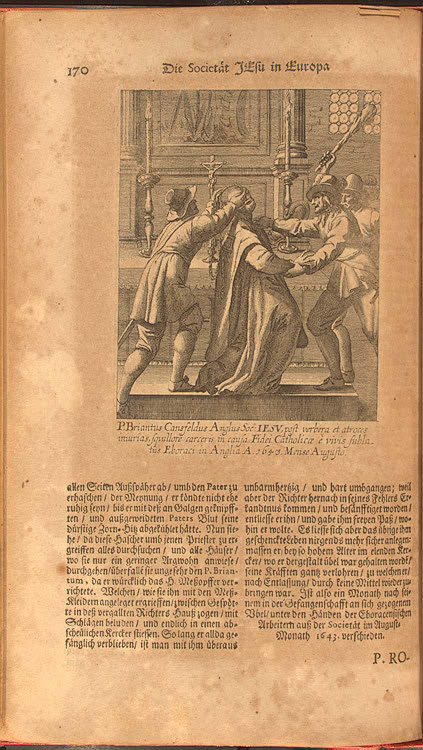
Persecution of Jesuits in EnglandIn the image on the left is Brian Cansfield (1581-1643), a Jesuit priest seized while at prayer by English Protestant authorities in Yorkshire. Cansfield was beaten and imprisoned under harsh conditions. He died on August 3, 1643 from the effects of his ordeal. At the right is another Jesuit priest, Ralph Corbington (Corby) (ca. 1599-1644), who was hanged by the English government in London, September 17, 1644, for professing his faith. (LOC)
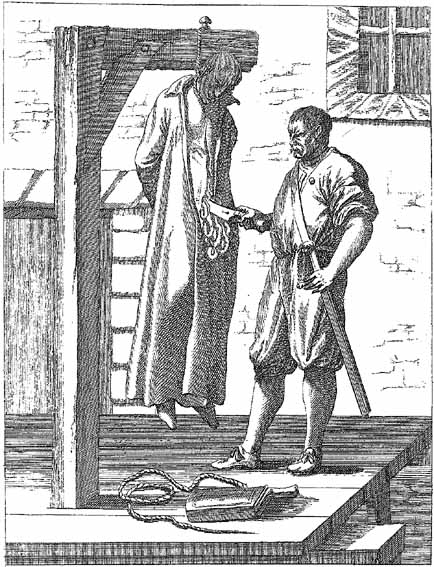
A Jesuit Executed for His Beliefs - Jesuits like John Ogilvie (Ogilby) (1580-1615) were under constant surveillance and threat from the Protestant governments of England and Scotland. Ogilvie was sentenced to death by a Glasgow court and hanged and mutilated on March 10, 1615. (LOC)
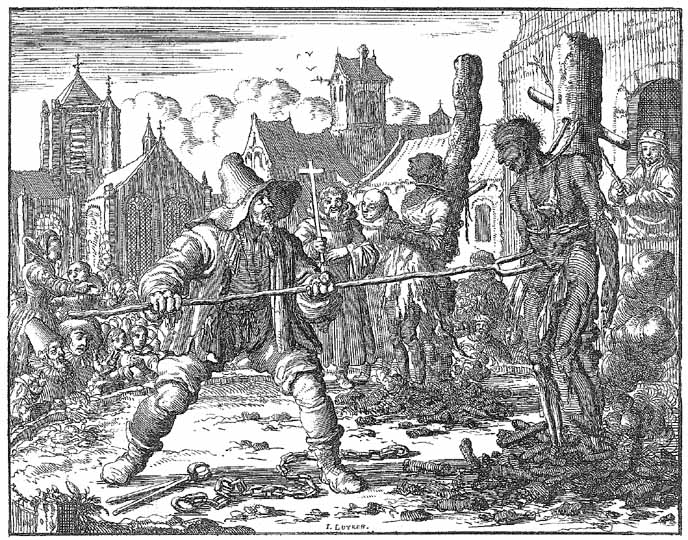
Execution of Mennonites - This engraving depicts the execution of David van der Leyen and Levina Ghyselins, described variously as Dutch Anabaptists or Mennonites, by Catholic authorities in Ghent in 1554. Strangled and burned, van der Leyen was finally dispatched with an iron fork. Bracht's Martyr's Mirror is considered by modern Mennonites as second only in importance to the Bible in perpetuating their faith. (LOC)
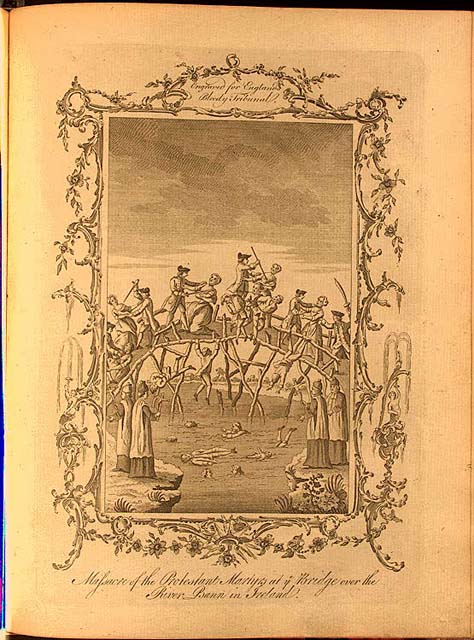
Drowning of Protestants - Shown here is a depiction of the murder by Irish Catholics of approximately one hundred Protestants from Loughgall Parish, County Armagh, at the bridge over the River Bann near Portadown, Ulster. This atrocity occurred at the beginning of the Irish Rebellion of 1641. Having held the Protestants as prisoners and tortured them, the Catholics drove them "like hogs" to the bridge, where they were stripped naked and forced into the water below at swordspoint. Survivors of the plunge were shot. (LOC)
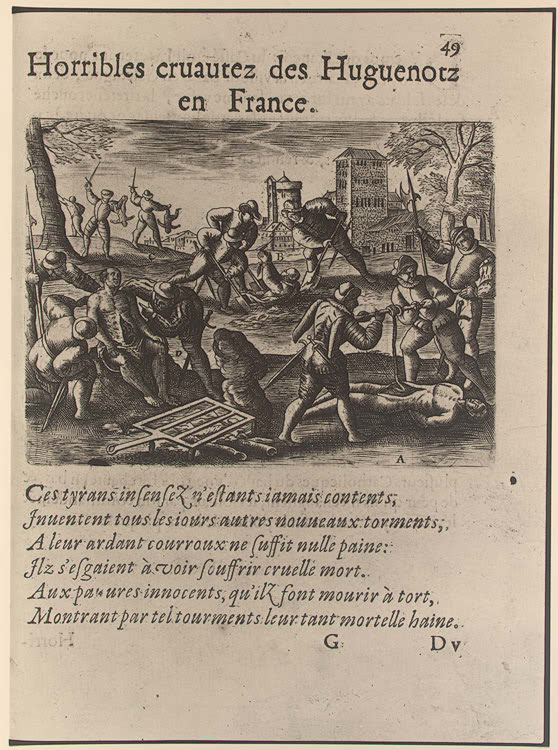
Persecution of Catholics by Huguenots - In the areas of France they controlled, Huguenots at least matched the harshness of the persecutions of their Catholic opponents. Atrocities A, B, and C, depictions that are possibly exaggerated for use as propaganda, are located by the author in St. Macaire, Gascony. In scene A, a priest is disemboweled, his entrails wound up on a stick until they are torn out. In illustration B a priest is buried alive, and in C Catholic children are hacked to pieces. Scene D, alleged to have occurred in the village of Mans, was "too loathsome" for one nineteenth-century commentator to translate from the French. It shows a priest whose genitalia were cut off and grilled. Forced to eat his roasted private parts, the priest was then dissected by his torturers so they can observe him digesting his meal. (LOC)
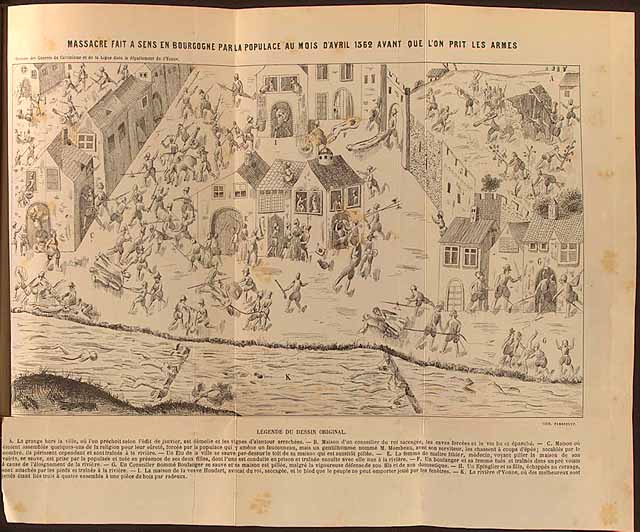
Persecution of Huguenots by Catholics - The slaughter of Huguenots (French Protestants) by Catholics at Sens, Burgundy in 1562 occurred at the beginning of more than thirty years of religious strife between French Protestants and Catholics. These wars produced numerous atrocities. The worst was the notorious St. Bartholomew's Day Massacre in Paris, August 24, 1572. Thousands of Huguenots were butchered by Roman Catholic mobs. Although an accommodation between the two sides was sealed in 1598 by the Edict of Nantes, religious privileges of Huguenots eroded during the seventeenth century and were extinguished in 1685 by the revocation of the Edict. Perhaps as many as 400,000 French Protestants emigrated to various parts of the world, including the British North American colonies. (LOC)
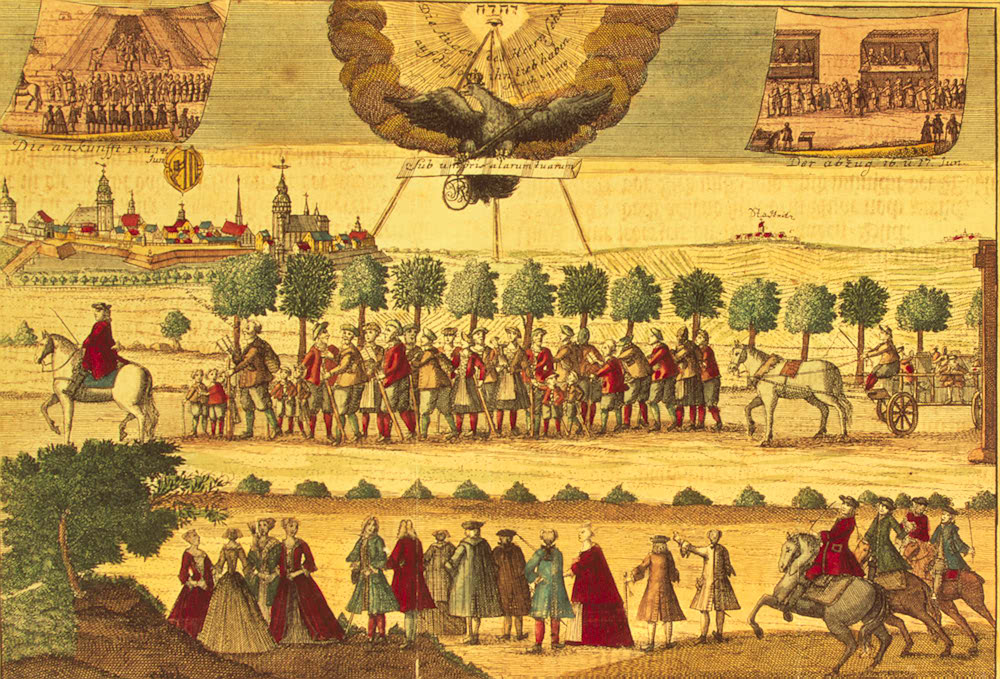
Lutherans Expelled Who Flee to America - The Expulsion of the Salzburgers - On October 31, 1731, the Catholic ruler of Salzburg, Austria, Archbishop Leopold von Firmian, issued an edict expelling as many as 20,000 Lutherans from his principality. Many propertyless Lutherans, given only eight days to leave their homes, froze to death as they drifted through the winter seeking sanctuary. The wealthier ones who were allowed three months to dispose of their property fared better. Some of these Salzburgers reached London, from whence they sailed to Georgia. Others found new homes in the Netherlands and East Prussia.
==================================


